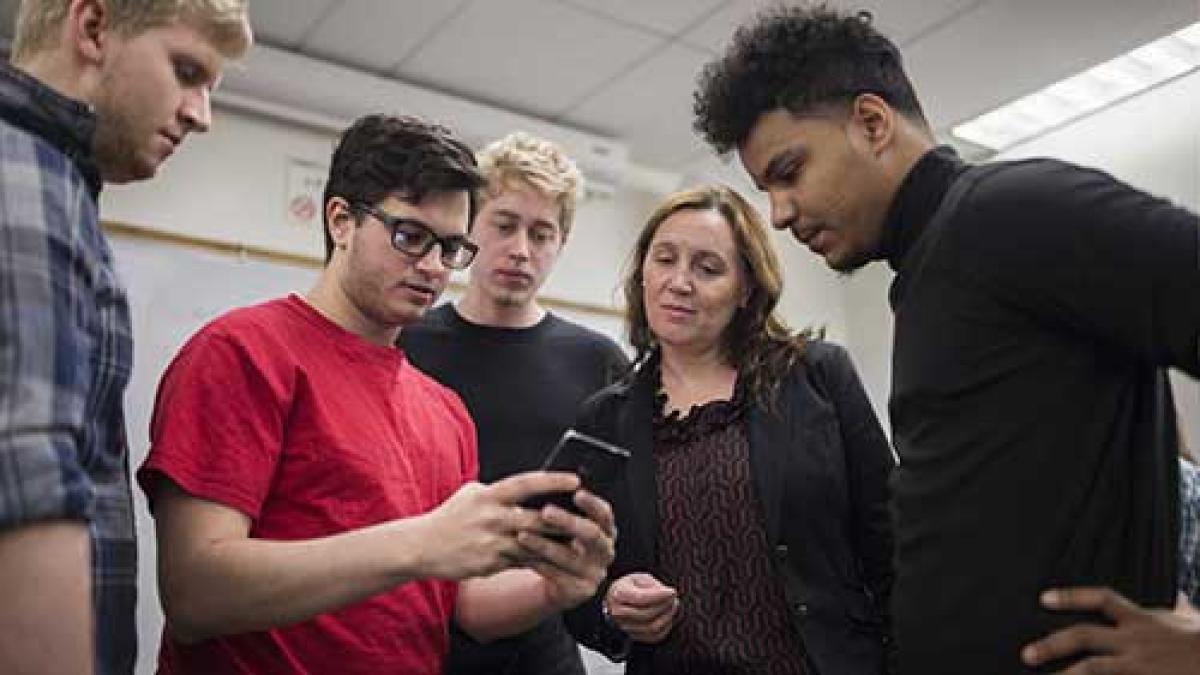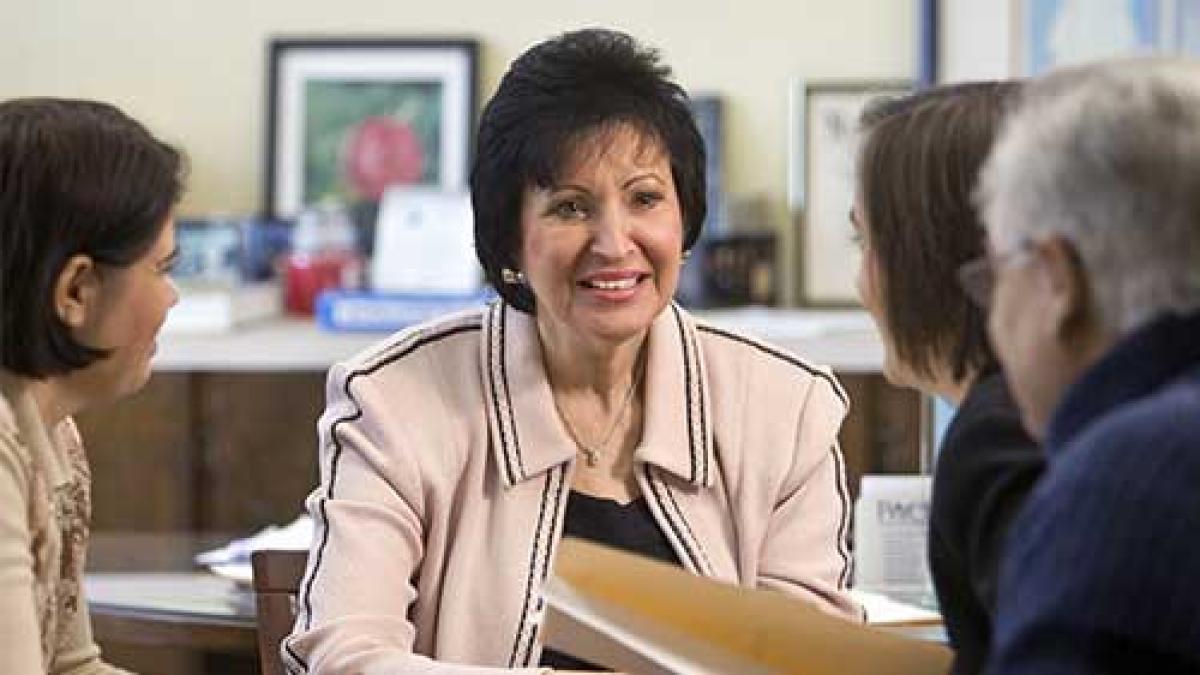With the inaugural class of Teaching Fellows, Pace University’s Faculty Center is building upon its strong foundation to become a major hub for interdisciplinary collaboration and innovation at Pace.
Finding Their Voice

View the full issue of Pace Magazine.
When Christine Suddeth ’21 enrolled in the Pace School of Performing Arts as a musical theater student, she was in the midst of recovering from a voice injury—one that her voice teacher, PPA Professor Amanda Flynn, helped her recover from. Her injury and subsequent recovery lead her down a path of research and investigation.
When Christine Suddeth ’21 enrolled in the Pace School of Performing Arts as a musical theater student, she was in the midst of recovering from a voice injury—one that her voice teacher, PPA Professor Amanda Flynn, helped her recover from.
“I suffered a voice injury in high school and went through a hard recovery process. When I came to Pace, Amanda helped me rehabilitate and get me back to where I was—and further,” said Christine.
Several years later, as she began to conduct her honors thesis, an opportunity came around for Christine to channel that experience for the better—Flynn had emailed a select group of students inviting them to apply to the Provost’s Undergraduate Student Faculty Research program. Sensing an opportunity to broaden her undergraduate experience, Christine immediately went for it—one email later, and Flynn and Christine started brainstorming potential topics.
“I have a published paper in the Journal of Voice looking at vocal health in undergraduate performing arts training programs—looking at how we teach vocal health, is it effective, are students able to navigate through their performing careers—this survey study left a lot of questions,” said Flynn. “Christine got excited at looking at the student experience going through a very intense, fast-paced BFA program coming in injured. We crafted this survey study looking at the student experience—what was it actually like to be injured in school. Christine is also a psychology minor, so this was a nice tie-in.”
Flynn and Christine developed a thorough survey study, and with considerable effort to find an adequate sample size of individuals who fit into the research category, were able to analyze and synthesize the responses to the study. The duo hopes that their findings—which will be more widely displayed through presentations at both the NCUR and the Voice Foundation, and potentially a published paper—will be used to better educate voice teachers, universities, students, and faculty as to how to best manage a vocal injury.
“Doing this research opened my mind a bit more—as a performing arts major, you can get tunnel vision,” said Christine. “It was liberating in a way that I could expand my breadth of study.”
“I’m grateful that Pace has such an initiative to get undergraduate involved in research because I think it’s a really fulfilling experience,” said Flynn. “You learn a lot, and it opens people’s minds that there’s more out their than what they’ve been doing for the last four years.”
More from Pace Magazine
When does a career become passion? When you’re able to use your skills, talent, and education for the greater good. It’s something Harriet Feldman has been doing for more than five decades, starting from her graduation from a diploma nursing school.
The School of Education has combined forces with Pace's OASIS program to get students on the autism spectrum career-ready by using virtual reality avatars to simulate a job interview scenario.


